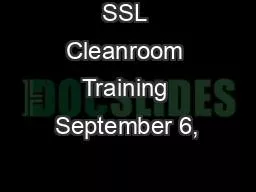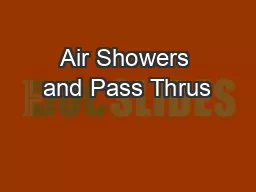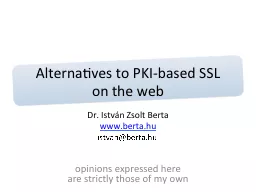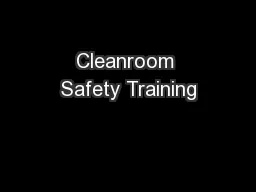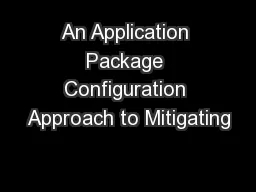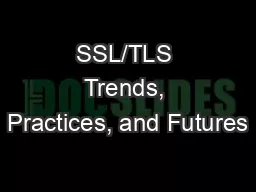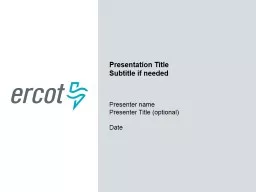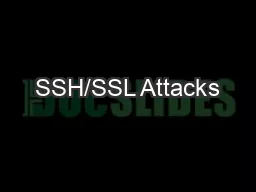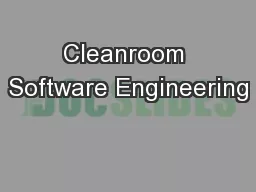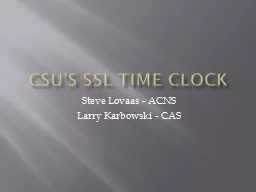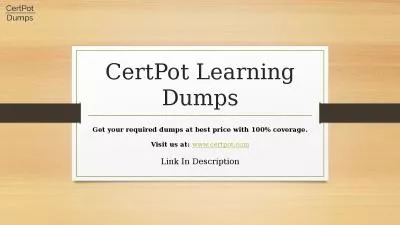PPT-SSL Cleanroom Training September 6,
Author : crandone | Published Date : 2020-06-25
2011 Jeremy McCauley PFP CCE amp PPE Mars Atmosphere and Volatile EvolutioN MAVEN Mission Training Objectives Provide Understanding of Need for cleanrooms Cleanroom
Presentation Embed Code
Download Presentation
Download Presentation The PPT/PDF document "SSL Cleanroom Training September 6," is the property of its rightful owner. Permission is granted to download and print the materials on this website for personal, non-commercial use only, and to display it on your personal computer provided you do not modify the materials and that you retain all copyright notices contained in the materials. By downloading content from our website, you accept the terms of this agreement.
SSL Cleanroom Training September 6,: Transcript
Download Rules Of Document
"SSL Cleanroom Training September 6,"The content belongs to its owner. You may download and print it for personal use, without modification, and keep all copyright notices. By downloading, you agree to these terms.
Related Documents

